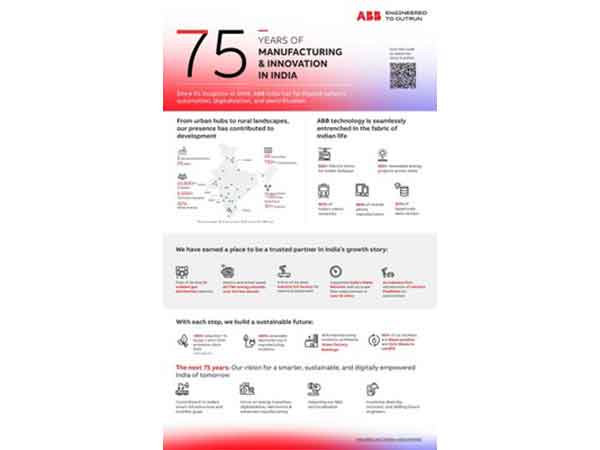Human resources amid the wave of artificial intelligence
May 01, 2024
Geneva [Switzerland], May 1: Today, generative artificial intelligence (AI) is emerging as a tool to boost humanity's effective productivity. The World Economic Forum (WEF) has identified improving productivity as a key driver of potential economic growth, with a strong correlation between the use of AI in the workplace and higher productivity.
Profound change for entire labor groups
According to a report published on April 29 by the Center for Advanced Management Studies (CIGI, Canada), worker displacement began even before the latest developments in AI. For example, personal computers and then tablets made the receptionist position almost obsolete in many places because customers could interact on their own.
According to research organization Oxford Economics, robots could replace an additional 20 million jobs globally by 2030. Goldman Sachs Bank (USA) also published a report estimating that AI could impact 300 million jobs. globally due to automation. Also according to this report, in the US and Europe alone, up to 2/3 of the number of jobs can apply AI and 1/4 of the number of jobs can be replaced by AI .
According to CIGI, AI also creates a complex impact on the global workforce. For example, driverless cars will not only eliminate the need for human drivers but are also expected to help reduce accidents, which could lead to a possible reduction in the number of police, medical staff and human resources. about car repair.
The advent of innovative AI has changed the workplace landscape. While automation has historically focused primarily on manual workers, innovative AI is impacting white-collar jobs in sectors that previously did not have access to automation. chemistry, such as auditing and marketing.
There are unintended consequences to AI's increasing penetration of the workforce. For example, there is a growing gap in wages between the highest paid, highly skilled, "super AI-enabled" workers and the lowest paid workers, which is causing work is becoming more and more polarized.
It's not the end of the world
Meanwhile, The Economist magazine has a commentary saying not to be too pessimistic about the risks from AI to labor resources. The article wittily states that changing "8 billion people" into robots is unthinkable, so there will be no "end of the world" for human jobs. Accordingly, in fact, right in the US, the number of manufacturing jobs is lacking more than 500,000 human resources and this number is up to 800,000 in the F&B sector (hotel restaurant services).
The above article recounts the past, when workers in some places destroyed factories when automated machinery systems appeared. But history also shows that when there are more machines like robots in auto factories, human resources will move to another stage. According to the International Federation for Automation (IFR), even Korean companies, by far the world's largest adopters of robots, employ 10 production workers for each industrial robot. Karma. In the US, China, Europe and Japan, this number is 25 - 40 workers/robot. According to consultants at Boston Consulting Group (BCG), in 2020, the world spent about 25 billion USD on industrial robots but this number accounts for less than 1% of global capital spending. Of course, in order not to do the jobs that robots have replaced, workers must upgrade their capabilities to be able to operate robots.
Regarding this issue, the Goldman Sachs report emphasized that: "The movement of workers away from automation has historically been offset by the creation of new jobs and the emergence of new occupations." After technological innovations account for the majority of long-term job growth, the combination of significant labor cost savings, new job creation and higher productivity for workers who have not lost their jobs increases. the possibility of a productivity explosion, thereby promoting significant economic growth." Since then, Goldman Sachs believes that AI can take away many jobs but will create many new jobs.
But there is a structural change that requires raising the bar
In its latest report assessing trends in global labor structure, WEF cited a survey on the future of work that received opinions from representatives of 803 companies that employ a total of more than 11.3 million workers. individuals, distributed across 27 industry clusters and 45 economies around the world.
The results predict that 42% of business tasks will be automated by 2027. AI, a key driver of potential labor mobility, is expected to be adopted by nearly 75% of companies participating in the survey. .
Most opinions say that agricultural technology, digital platforms and applications, e-commerce and digital commerce, and AI are all predicted to lead to significant disruption in the labor market. dynamic. But businesses also expect job shifts offset by job growth elsewhere to deliver a net positive.
Participating in the survey, nearly 50% of organizations expect AI to create job growth while less than 25% predict it will reduce the number of jobs. For example, the development of AI that drives e-commerce could create millions of jobs as e-commerce development consultants.
However, during that transition, the WEF report said that it is necessary to retrain human resources. Specifically, employers estimate that 44% of workers' skills will change between 2023 and 2028. About 60% of the current workforce needs to be retrained before 2027, but the problem is it is possible that only 50% of these are actually fully retrained. Up to 42% of business representatives participating in the WEF survey also rated employee training in using AI and big data as the third priority in improving the quality of human resources.
Source: Thanh Nien Newspaper








